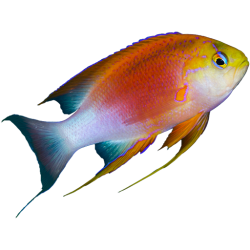- 1 Advanced Open Water Diver
- 2 Master Scuba Diver
- 3 Dive Specialties
- 3.1 Boat Diver
- 3.2 Deep Diver
- 3.3 Delayed Surface Marker Buoy (DSMB)
- 3.4 Dive Against Debris
- 3.5 Digital Underwater Photographer
- 3.6 Diver Propulsion Vehicle (DPV)
- 3.7 Drift Diver
- 3.8 Drysuit Diver
- 3.9 Enriched Air Diver (Nitrox)
- 3.10 Kelp Restoration Diver
- 3.11 Night Diver
- 3.12 Peak Performance Buoyancy
- 3.13 Project AWARE Specialist
- 3.14 Search and Recovery
- 3.15 Self-Reliant Diver
- 3.16 Underwater Naturalist
- 3.17 Underwater Navigation
- 3.18 Wreck Diver
So, you're certified? Now what? There are many more types of diving to explore, and different specialties you can learn which will enhance your diving experience.
Ready to get started? You can take these specialty classes during my guided dives in Monterey. View current rates or send me e-mail at scuba@spanglers.com for more information.
Advanced Open Water Diver
Expand your diving experience with five adventure dives, including deeper dives, diving from a boat, underwater photography, or a night dive. Think of this as "Open Water Part 2"; you don't need to be an advanced diver yourself, and you can take it right after Open Water Diver.
Each of these dives is the first dive of one of the Dive Specialties below.
Two of the dives must be Deep Diver and Underwater Navigation. I usually do Night Diver as the third dive. I'll work with you to pick your other two other dives from the list of specialties that I teach. Some of the more common choices are Peak Performance Buoyancy, Search and Recovery, and Underwater Naturalist.
If you already have one or more PADI specialties, those can each count as one of your adventure dives. For example, if you already have Dry Suit Diver and Deep Diver, you only need to do Underwater Navigation and two other adventure dives to finish up Advanced Open Water. You only pay for the three dives we need to do.
We can also add an optional pool session where we work on buoyancy and finning skills, and practice deploying a DSMB.
Number of dives: 5
Prerequisites: Open Water Diver, 12 years old
Master Scuba Diver
Think of this as the "black belt" of diving. When you show your Master Diver card at a dive shop, they know you have a range of diving experiences and enough dives under your belt to go on the best dives, whether it's drift diving the hammerheads off of Molokai or staring into 200' visibility off the forbidden isle of Ni'ihau.
Master Diver isn't actually a course on its own, but it takes some work to get there. You need to be Rescue Diver certified, have 50 logged dives, and be certified in five Dive Specialties. I can teach you all of that.
Prerequisites: Rescue Diver, 5 Dive Specialties, 50 logged dives
Dive Specialties
These are all PADI Specialty Diver classes. The first dive of each class counts as one of your Advanced Open Water adventure dives, and each completed specialty course counts towards Master Scuba Diver.
If you just want to try one of these without doing the full class, that's called an Adventure Dive. We'll do some knowledge reviews before getting in the water, and a few skills in the water. It still counts towards Advanced Open Water, and you can come back later and do the rest of the dives for the specialty if you want.
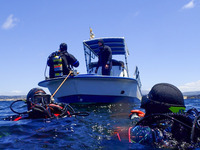
Boat Diver
Improve your dive skills when diving from boats.
Number of dives: 2
Prerequisites: Open Water Diver
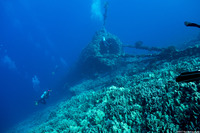
Deep Diver
Dive safely all the way down to the recreational limit of 130'.
This takes 2 days of diving (4 dives), which can be on different weekends, and at different locations. There are three ways to get deep in Monterey:
- The north end of Monastery Beach is right at the edge of the underwater Monterey Canyon. It's the deepest shore dive in the area. Monastery is a northwest-facing beach exposed to swell, so often gets washed out; it may take a few weekends to find 2 days where it's safe to dive there.
- Point Lobos drops off past the back of mid-reef. It's a more protected entry, so almost always diveable. It takes a little more swimming to get deep; so I recommend 100 cu.ft. tanks (which you can rent at Diver Dan's, if you don't have your own).
- Off of one of the local dive boats. I like the Beachhopper II and Escapade, though I can work with any of the Monterey boats. Less swimming involved, and we'll get to see sites you can't reach from shore.
Prerequisites: Advanced Open Water Diver, 15 years old
Delayed Surface Marker Buoy (DSMB)
When you're diving around or near boats, it's a good idea to carry a Delayed Surface Marker Buoy (DSMB). You learned how to use it to signal at the surface in your Open Water class. Now, learn how to deploy it from depth, and ways it can help you on your safety stops or in emergencies.
Number of dives: 2
Prerequisites: Open Water Diver, 12 years old
Dive Against Debris
Make a difference on every dive by activating your inner citizen scientist and safely removing trash from the ocean. Learn how ocean plastic and trash cleanups keep your local dive sites healthier.
Number of dives: 2
Prerequisites: Open Water Diver
Digital Underwater Photographer
I'll help you get the most out of your camera, whether it's a GoPro or a fancy camera rig with underwater flashes. More information on the Underwater Photography page.
Number of dives: 2
Prerequisites: Open Water Diver
Diver Propulsion Vehicle (DPV)
Learn to dive with a Diver Propulsion Vehicle (DPV / Scooter). DPVs are much faster than finning, and let us explore some of the more distant parts of local dive sites. They're also way, way more fun than they have any right to be.
If you don't have your own DPV, I have one available for rent.
Number of dives: 2 ocean
Prerequisites: Open Water Diver
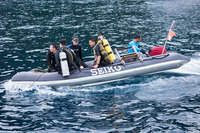
Drift Diver
Some of the most fun tropical dives are drift dives, where the boat drops you off, you float with the curent, and the boat picks you up at the end of the dive.
This one is hard to teach in Monterey, because we don't really have significant currents. But you can take me to somewhere tropical that does...
Number of dives: 2
Prerequisites: Open Water Diver, 12 years old
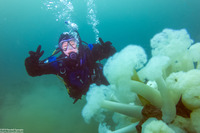
Drysuit Diver
Learn how to dive in a drysuit. If you get cold easily, or you want to do deeper or longer dives, a drysuit will make you more comfortable.
I'm not currently offering this because the pool I was using has become unavailable. I recommend doing your drysuit cert with one of the other area shops to get the basics down, and then do a guided dive with me to fine-tune your drysuit buoyancy and skills.
Number of dives: 1 pool, 2 ocean
Prerequisites: Open Water Diver
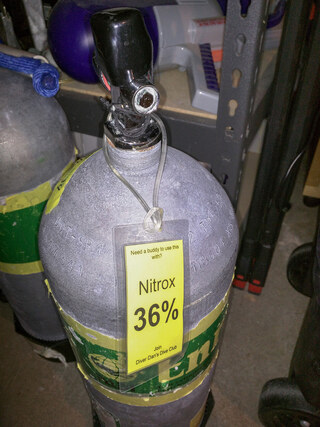
Enriched Air Diver (Nitrox)
Diving with enriched air (up to 40% oxygen) provides longer bottom times and increased safety. This is particularly true if you're on a dive vacation where you're diving multiple times a day.
Number of dives: None (just one evening in the classroom)
Prerequisites: Open Water Diver, 12 years old
Kelp Restoration Diver
This class is not currently offered, since the California Fish & Game Commission ended current kelp restoration efforts in Monterey in February 2024. Upset about that? Me too. I'll teach it again if/when they change their mind...
Learn how to cull urchins as part of the Giant Giant Kelp Restoration Project (G2KR). When the sunflower sea stars vanished due to wasting disease, the urchin population exploded. They're eating all the kelp along the coast. G2KR is a project to restore areas of kelp to speed the recovery of the ecosystem.
Number of dives: 2 (off a boat; it's a long surface swim from shore)
Prerequisites: Open Water Diver, 12 years old. Peak Performance Buoyancy strongly recommended.
Night Diver
How is night diving different? It's (really) dark, which is why you'll learn about the different types of dive lights and how to use them. It's also really cool. Learn how to dive safely at night - entry/exit, navigation, and buddy communication.
Number of dives: 3
Prerequisites: Open Water Diver, 12 years old
Peak Performance Buoyancy
How much weight do you *really* need? Do you tend to turn upside down when you're hovering, or are your feet super floaty? We can fix that.
Number of dives: 2
Prerequisites: Open Water Diver
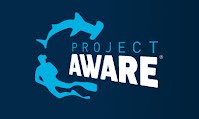
Project AWARE Specialist
Project AWARE mobilizes the world’s divers into a global force to protect our ocean planet. Learn about how terrestrial and aquatic ecosystems are interconnected and how you can help take care of our oceans.
Number of dives: None (just one evening in the classroom)
Prerequisites: None (you don't even need to be a diver)
Search and Recovery
Find and safely bring to the surface items from small to large (Car keys, GoPro's, weight pockets, fins, etc.). Learn about search patterns and lift bags.
Number of dives: 4
Prerequisites: Advanced Open Water Diver, 12 years old
Self-Reliant Diver
Learn how to dive safely without a buddy. We'll cover redundant air supplies (pony bottle or stage bottle), swimming without a mask, DSMB use, and more.
This is one of the most advanced courses I teach, and not for everyone. I only teach it to people I've already dived with, since I need to assess your buoyancy, gear, and self-rescue skills before I teach the course.
Number of dives: 3 (+ classroom session)
Prerequisites: Advanced Open Water Diver, 18 years old, 100 logged dives, check-out dive / skills assessment
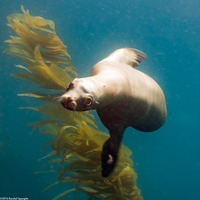
Underwater Naturalist
Learn about the underwater ecosystem, and how all the animals and plants interact. Monterey is a great place to do this because there is such diversity of marine life.
Number of dives: 2
Prerequisites: Open Water Diver
Underwater Navigation
Hate long swims when you surface in the wrong place? Improve your underwater navigation skills using compass and natural navigation.
If you're having specific navigation issues in Monterey (getting back to the anchor on a boat dive, getting lost at Point Lobos, finding the big pipe and metridium fields at San Carlos Beach, etc.), I also offer customized navigation lessons.
Number of dives: 3
Prerequisites: Open Water Diver
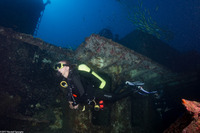
Wreck Diver
Learn how to safely dive around and in shipwrecks.
This one is a little tougher to teach in Monterey. The only wreck we have is the Sailboat at Monterey State Beach, and it's too small to really penetrate. The Sailboat is fine for an adventure dive as part of Advanced Open Water Diver, though.
Number of dives: 4
Prerequisites: Advanced Open Water Diver, 15 years old
